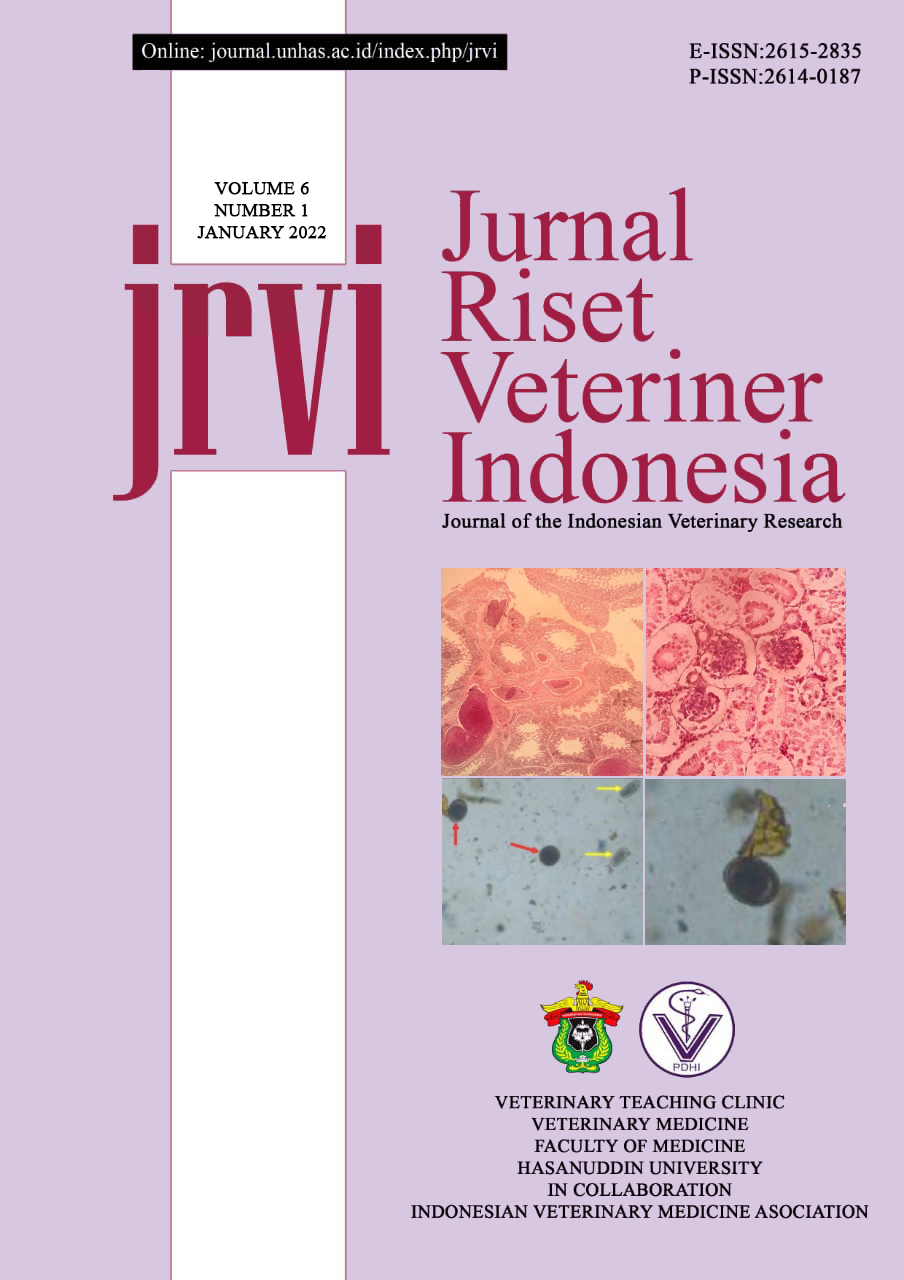Abstract
Trypanosomiasis is one of the most widespread diseases in the world. This disease is an infectious disease that often occurs in various types of livestock, especially horses, buffalo and cattle. Trypanosomiasis can cause weakness in infected animals, which can end in death in these animals. This disease is caused by infection with the blood parasite Trypanosoma evansi (T. evansi). The activity of this parasite is very fast. Shortly after entering the animal's body, T. evansi immediately enters the circulatory system and performs breeding activities that can cause damage to blood cells (Ressang, 1984; Wayan et.al 2013). Treatment of trypanosomiasis is currently still using commercial synthetic drugs which are quite expensive, and it has even been found that some substances are no longer effectively used to kill T. evansi. Treatment using basic ingredients derived from plants can be an alternative that needs attention. Garlic bulbs are known to have potential as anti-microbial agents. Its ability to inhibit microbial growth is very broad, including viruses, bacteria, protozoa, and fungi (Nok et al., 1996; Zhang, 1999; Pizorno and Murray, 2000; Yin et al., 2002). Garlic (Allium sativum L) has been widely studied and the results are known to contain active compounds including flavonoids and allicin which have antibacterial, anti-parasitic and antiviral effects (Londhe, 2011). The aim of this study was to determine the effect of giving garlic extract on the average number of white blood cells of mice infected with T. evansi. The study was conducted on thirty male mice of the DDY strain with a body weight of 25-30 g per head which were divided into six treatment groups. Each treatment used five mice as replicates, namely: the untreated group, as a normal control (K0); the group infected with T. evansi intraperitoneally at a dose of 103/0.3 mL; divided into several groups, namely those who were not given any treatment (K1, negative control), the group that was given trypanocidal (K2, positive control), the group that was given garlic extract at a dose of 50 mg/kgBW (K3); the group given garlic extract at a dose of 100 mg/kgBW (K4) and the group given garlic extract at a dose of 200 mg/kgBW (K5). In this study, it was shown that at the beginning of T. evansi infection it caused an increase in the average number of leukocytes in the group of mice that did not receive treatment (K1) and those given trypanocidal (K2), while the group of mice that received treatment with garlic extract showed a decrease in the number the mean leukocyte count (K3 and K4) or a non-significant increase in the mean leukocyte count (P<0.05) at K5.
This work is licensed under a Creative Commons Attribution-NonCommercial 4.0 International License.
Downloads
Download data is not yet available.

